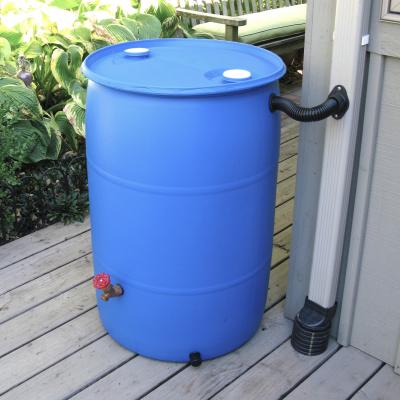Why Rain Barrels
The average American family directly consumes nearly 110,000 gallons of water each year, and if you include water used for producing food, energy, and consumer goods, that total jumps to 1.9 million gallons annually! However, a single 55-gallon rain barrel can save up to 1,300 gallons of water every year.
Rain barrels collect free rainwater to water gardens, trees, and lawns. This saves you money on water bills AND helps reduce demand for energy-intensive treated tap water, limits stormwater runoff and erosion, and saves water for use during droughts. Installing a rain barrel is one of the easiest ways to reduce your water footprint and help recharge our rivers, lakes, and aquifers.
To provide some context, the City’s Stormwater Preliminary Engineering Report states that the stormwater infrastructure within the City has numerous areas that drain to the sanitary sewer system. These cross-connections cause extreme maintenance issues with the wastewater treatment plant, and a public health and safety concern as City employees must deal with the excess flow into the wastewater treatment plant to prevent flooding of the plant. More rain barrels would be a great way to address our stormwater diversion needs at the community level as well as help residents save on their water utility bills.
As detailed in section WW-6 of the city-adopted Energy Conservation Plan, support of community initiatives to collect rainwater, develop rain gardens, and use gray water for landscaping is highly encouraged. More rain barrels collecting stormwater in the City will lead to a decreased carbon footprint through reduced need for future incoming Water and Wastewater Treatment Plant capacity, and coincident energy usage at both. This entails a decreased use of taxpayer funds that would’ve been unnecessarily spent on the treatment of stormwater.
To help figure out how much water a rain barrel could save from your particular roof, check out this online Rainfall Harvest Calculator. You will need to know the dimensions of the roof that feeds into your gutter system as well as the amount of rainfall in inches. *HINT* In Red Lodge, it rains an average of 10.71 inches in May-September.

